#Ringerike
Text
Wolf & Deer

A practice of Viking art styles (Ringerike, Mammen, & Jelling) mixed with personal touches
#lambradire art#digital art#digital drawing#sketch#viking art#Ringerike#Mammen#Jelling#this thing in total took about 3 hours#this was a fun thing to make#definitely doing more in the future#wolf#deer
11 notes
·
View notes
Text
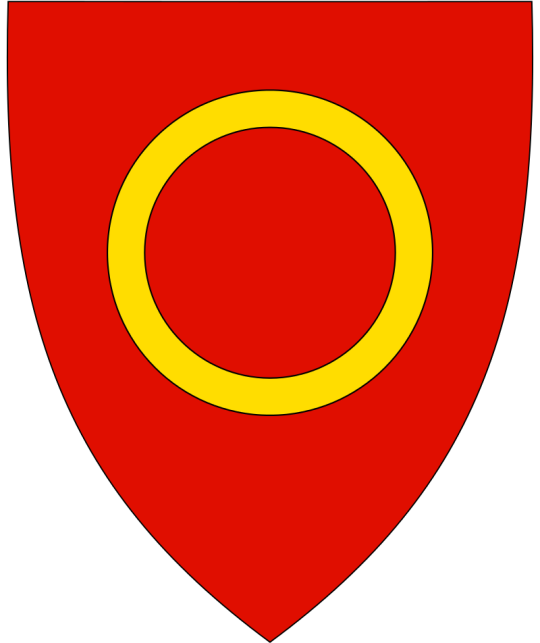
Ringerike, Norway
The ring is a pun on the name and also represents the unity of the municipality.
1 note
·
View note
Text

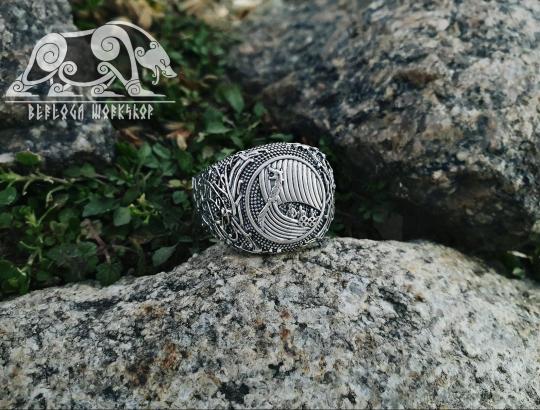
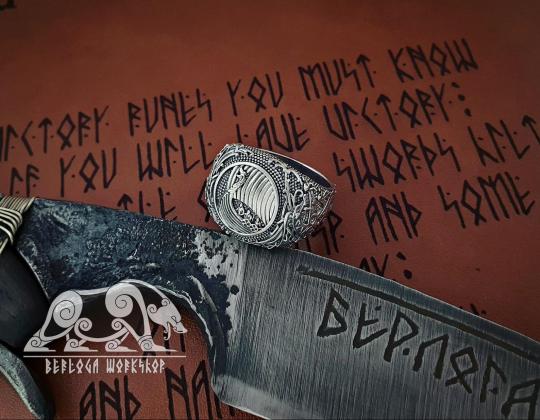
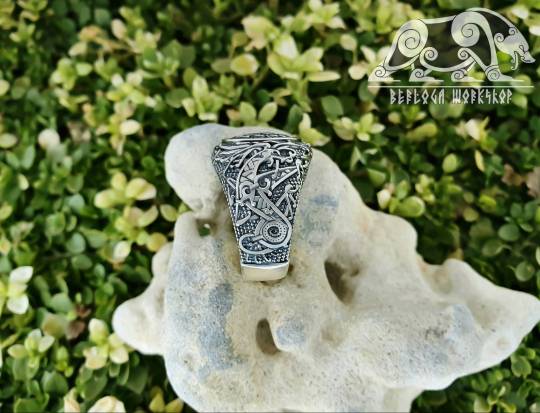
Viking ship ring (Ringerike style)
The name 'Viking' comes from the word 'Vikingr' (Old Norse) meaning 'pirate raid'. The Norse people were said to be 'going Viking' when they set sail to explore and loot and their sea vessels were 'horses of the waves' symbolic of speed and power. During the period 850-1000 AD, the Vikings explored many countries including The United Kingdom, France, Spain, Italy as well as North Africa. They also discovered Iceland, Greenland and Newfoundland.
#berloga_workshop#vikingjewelry#exclusivejewelry#likeaviking#vikingstyle#norse#vikingring#ring#handmade#Ringerikestyle#shipring#ship#silverring#Ringerike#viking
0 notes
Text
Irish Coin Daily: Hiberno-Norse, Phase V, Ringerike design - Small pellet in annulet at centre (Long Cross Imitation reverse - pellet and trefoil of pellets in alternate angles)
Irish Coin Daily: Hiberno-Norse, Phase V, Ringerike design – Small pellet in annulet at centre (Long Cross Imitation reverse – pellet and trefoil of pellets in alternate angles)
Date: c. 1075-1080
Hiberno-Norse, Phase V, Class (Ringerike obv & Long Cross imitation, with pellet and trefoil of pellets in alternate angles) Silver Penny
Description:
An Hiberno-Norse / Hiberno-Scandinavian, Phase V (Long Cross imitation, with a Ringerike obverse) Silver Penny. Obv: pelleted annulet at centre of saltire of four croziers, reversed S to left, scourge (?) and trefoil of pellets…
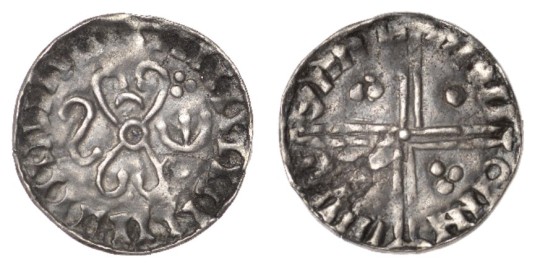
View On WordPress
#hiberno-scandinavian#penny#rare#ringerike#ringerike design#silver#silver penny#viking dublin#viking penny#vikings#Dublin#hiberno-norse
0 notes
Photo

Kongens utsikt er 'helt konge' 👑🙌 #kongensutsikt #dronningensutsikt #krokkleiva #krokkleivanaturreservat #krokskogen #ringerike #oslomarka #tyrifjorden #steinsfjorden #fottur #hiking #utsikt #utsiktspunkt #visitnorway (ved Kongens utsikt) https://www.instagram.com/p/Ch-mt_2tBoC/?igshid=NGJjMDIxMWI=
#kongensutsikt#dronningensutsikt#krokkleiva#krokkleivanaturreservat#krokskogen#ringerike#oslomarka#tyrifjorden#steinsfjorden#fottur#hiking#utsikt#utsiktspunkt#visitnorway
0 notes
Text
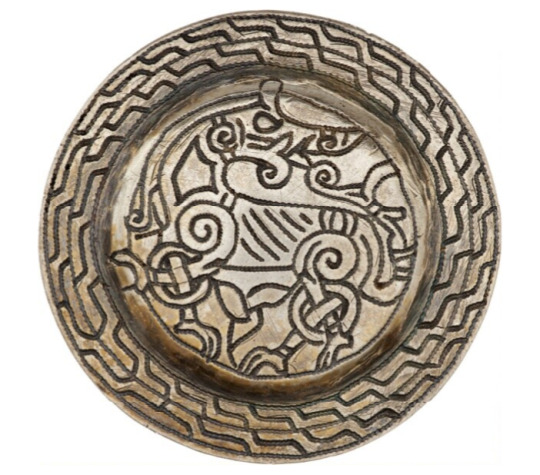
Round Brooch
Viking, 800-1100 CE
Silver round brooch, decorated in Ringerike Style.
203 notes
·
View notes
Photo
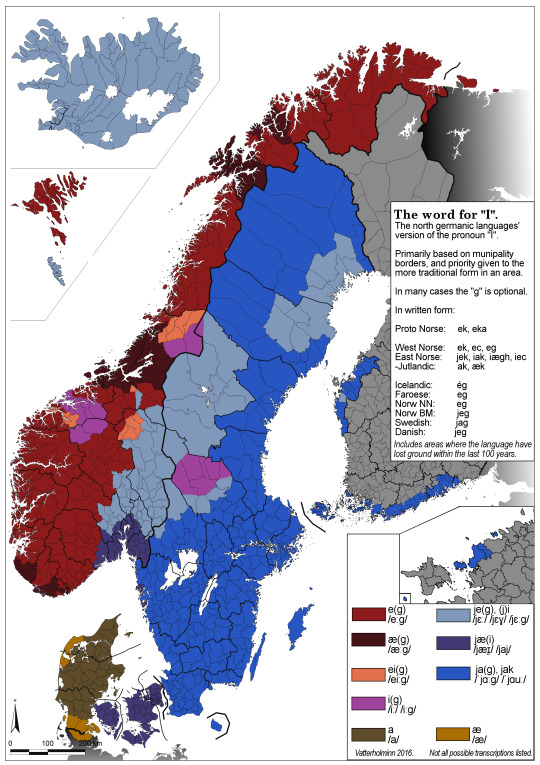
The pronoun "I" in North Germanic languages.
by jkvatterholm
The Proto Norse form was "ek" and "eka".
In the form "eka" the e split into "ja", making the pronouns in the norse period be "jak" and "ek" in standardised spelling. "Jak" was common in the east, as seen on the map. In Icelandic as well it was "ek". The change to "jeg" there is newer, also appearing in words like "fé" being /fjɛː/ and not /fɛː/.
The "je" form has also expanded a lot westwards. In Jämtland forms like "ek" seems to have been in use in the 18th century, while gone now. In urban dialects in western Norway it is expanding even today.
"Ek/eg" has not remained unchanged in Norway either. Some places have had a diphthongizationit into "eig" while others have turned into an "æg". With or without the g. Some even just say "I".
Dalarne in Sweden are worth mentioning, especially because of the Elfdalian dialect there using "ig".
In Jutland as well the breaking into "ja" never took place. In the middle ages forms like "æk" and "ak" existed, now being "a" and some places "æ".
Some examples of the word in use:
"Je" - Jämtland, Sweden.
"Je" - Ringerike, Norway.
"Eg" - Hordaland, Norway.
Various, Nothern Sweden.
"Ig" - Älvdalen, Sweden.
"Æ" - South Jutland, Denmark.
"Ei" - Sunnmøre, Norway.
"Æ" - Trøndelag, Norway.
"Jeg/ég" - Iceland
"Eg" - Faroe Islands
83 notes
·
View notes
Text
It Is You (Ivar The Boneless)
Ivar the Boneless drabble
Imagine you are the one that catches Ivar's eyes, not Freydis.

The crowd is overly excited by the army’s return to Kattegat, they had finally avenged the death of Ragnar Lothbrok. I had not taken long to recruit the great heathen army, and less to decimate the Saxons. Most of the hassle had been travel discrepancies and what to do after. Now with all that finally over, Vikings have a chance to celebrate victory. It is no surprise, then, when the great hall is completely packed with drunk people in the late hours of the night. The celebration of the great heathen army’s conquest is something to brag about, and Ivar the Boneless is doing precisely that.
You have never seen the Viking prince in person, considering that you are not a shieldmaiden, and could not go to avenge Ragnar. Also, you grew up in Ringerike, not Kattegat, thus you never encountered him during your childhood. You have heard the stories, though, not only the most recent ones about his victory against the Saxons, but also those speaking of his cruelty and quick temper. And so when you came to welcome your brother back from fighting in England, it was not in your plan to cross paths with Ivar the Boneless. However, once you entered the great hall, your destiny was entangled with his.
He is not the only man that stares at you more than he should, but his gaze is so intense that you can not shake it off. It burns through your skin like fire, stealing all of your attention from your brother’s words. When you look up, Ivar is already glancing your way. He does not smile or try to approach you like the rest of the men, he just stares. His look is heated but not loaded with anger, it is something else. No one has ever gazed at you like that, it has such desire and amazement. It makes you feel like a goddess. So, while your brother is still talking, you leave his side to introduce yourself to the cruel prince. That is the first step that changes your life.
Tags: @cdauni @justsomecreaturewandering
#ivar ragnarsson#ivar the boneless#ivar x reader#ivar x you#ivar vikings#ivar imagine#ivar fic#vikings#vikings fic#vikings imagine#ivar lothbrok#ivar fluff#ivar x oc#vikings fluff#ivar ragnarsson x reader#vikings one shot#ivar ragnarsson x ofc#ivar lothbrok x reader#vikings drabble
449 notes
·
View notes
Photo
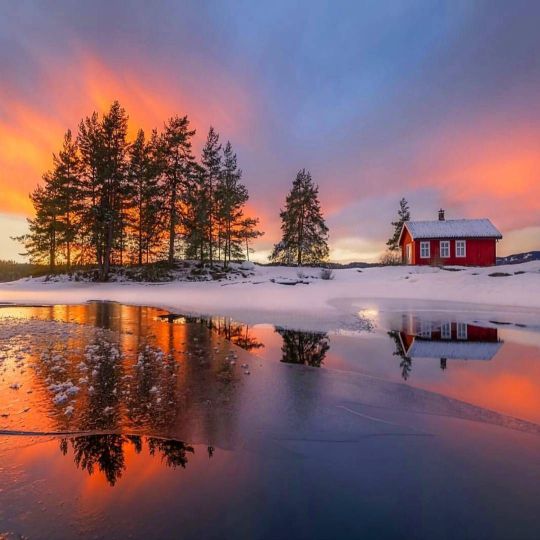
Ringerike Norway By: @ole.henrik.skjelstad Who would you see this sunset with? by mittnorge / Instagram
(via Pinterest)
486 notes
·
View notes
Photo

Rising Up.
By, Ole Henrik Skjelstad
Ringerike, Norway.
#upload#landscape#vertical#winter#nature#cloudscape#stars#aurora borealis#sky#original photography#norway#curators on tumblr#500px
1K notes
·
View notes
Text
An Unexpected Norse Detail in Winterfell
I was scrolling through tumblr yesterday, as you do, and suddenly paused on a gifset of the Lannister party in Winterfell during the early episodes of season 1. What caught my eye was this:

Behind the long table in Winterfell's great hall is some kind of large wooden screen/divider featuring some very interesting carvings. These carvings are near identical to those found on the Urnes Stave Church in western Norway, which dates from the 12th century:
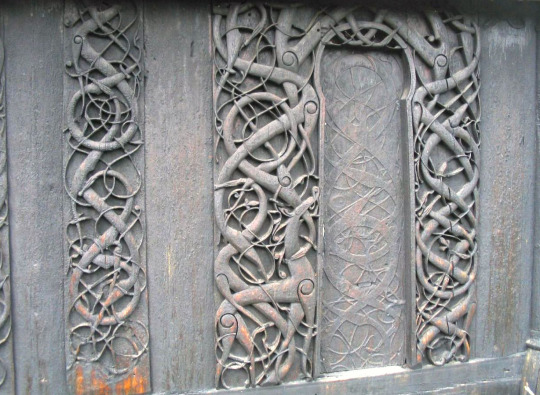
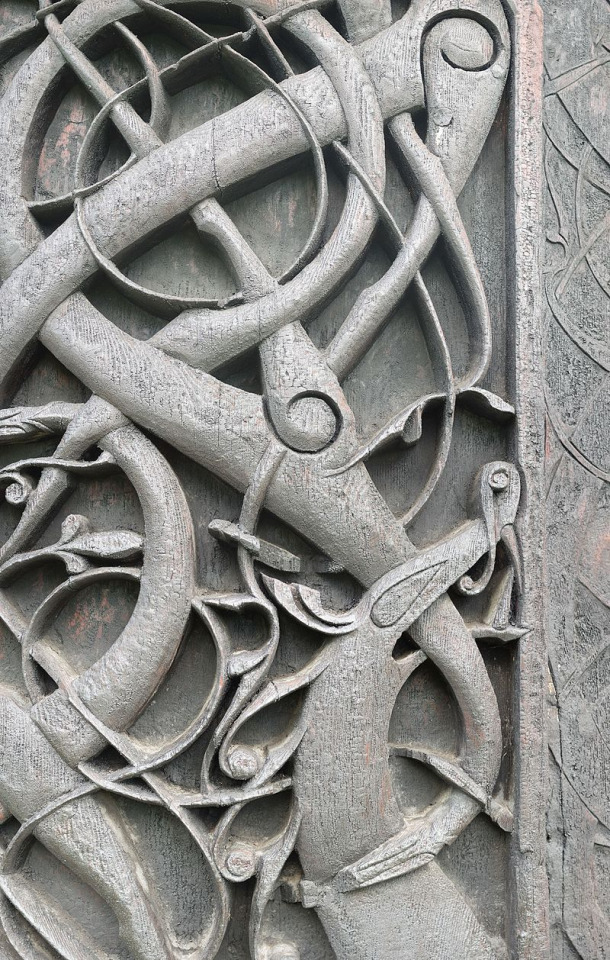
I don't think we ever see this wooden screen in Winterfell again, but it's an interesting inclusion nonetheless, back when the show stuck more closely to the source material.
In The Vikings (Penguin, revised edition, 2016) Else Roesdahl talks a bit about this particular style of ornamentation:
The Urnes style is the last phase of the long development of Scandinavian animal ornament. This seems to have developed shortly before the middle of the eleventh century and was popular for nearly a century, that is into the early Middle Ages. After a final phase where it gave rise to details and influences in Romanesque art, now predominant in Scandinavia, it had died out completely before the year 1200. Many other forms of Viking Age followed the same course.
The vigour and vitality of the Ringerike style gave way to this sophisticated, elegant, indeed almost decadent, style. It is named after the exquisite wood carvings that were re-used in Urnes Church in western Norway: a portal and a door, two wall planks, a corner post and two gable ends, one complete [...] The large, four-legged animal is still one of the main motifs, but it has become as slim as a greyhound. Snake-like animals with one foreleg, snakes and thin tendrils sometimes ending in a snake's head are also featured. The designs characteristic of this style form open, asymetric patterns, creating an impression of an undulating interweaving of animals and snakes. The large loops are often figures-of-eight and the shapes grow and diminish evenly; there are no abrupt transitions. The style is also used with virtuosity on brooches and on large numbers of rune stones in central Sweden, where the undulating ornament follows the shape of the stone and the long bodies of the snakes are used as rune bands [...] Several examples of the style have been found in England, and in Ireland it became as popular as the Ringerike style.
What's so intriguing about the original carving though is that it is depicting pagan symbolism... but on a Christian church. As mentioned above, the Ringerike style predate Urnes and was "roughly contemporary with the intial spread within Scandinavia of Christianity, and was the first to contain Christian iconography, although pagan symbolism was still present," notes Philip Parker (The Northmen's Fury, Vintage, 2014). By around 1050, it gave way to the Urnes style, named for the stave church shown above.
But what do these carvings mean? In Tree of Salvation: Yggdrasil and the Cross in the North (Oxford University Press, 2013), G. Ronald Murphy offers this explanation:
The door is simply surrounded with whorls of writhing snakes and vines. The tangle is so perfectly executed in a welter of animal elongation and plant reduction to vines, that it is difficult to identify where a head begins or where a tail finally ends, if at all, or to trace what seems like a joint to a neck or a leg or a vine. The main point seems to be the inter-twined-ness itself of all living things, animal or vegetable, in one huge tangle [...]
Now as one looks at the left side of the doorway there is one animal standing on four legs [see above!] that is simply startling in the clarity of its depiction. It has been called a lion and explained as the Lion of Judah (Christ) fighting with evil. I think that such an interpretation makes the mistake of using an inappropriately biblical explanation when the artist, by his very Viking-like pictorial style as well as his tangle of animal and plants, tells you he is here using a Germanic one.
If you look at the animal you can see that he is eating at the vine or branch which in turn is a serpent biting at him in the neck. Look at the animal's head and you can see two small horns protruding—that animal is a young male deer, a hart. Now it becomes clear it is not the Old Testament that is giving the context here for the meaning of the portal: this is an allusion to the Elder Edda and its description of Yggsdrasill as the suffering tree with many serpents forever biting on its twigs and branches, as those twigs and branches are also being devoured by a hart. The traditiona of the single deer may also come from a previous stanza in the Grímnismál where the hart is named:
Eikþyrnir [Oak-thorn] is the hart's name, who stands on Father of Hosts' hall
and grazes Læraðr's [kenning for Yggdrasill] branches;
and from his horns liquid drips into Hvergelmir [seething cauldron],
from thence all waters have their flowing (Poetic Edda 55 and 270n)
According to Murphy, "to enter the door of the Urnes stave church is to enter Yggdrasill." So, to bring this back to the world of asoiaf, it´s an interesting piece of set design to include this screen or divider in Winterfell, a place closely connected with the "old gods" of the north and that has its own world tree, in a sense: the weirwood tree, or heart tree, of the godswood. Moreover, beneath one of Yggdrasill's three large roots is the spring Hvergelmir (mentioned above, meaning 'seething cauldron'), beneath another is Mímisbrunnr ('Mímir's well) and beneath the third is Urðarbrunnr ('Well of Urðr'), this is interesting to note in parallel to the hots springs and ice-lidded pool in Winterfell's godswood, close to its heart tree.
In the Prose Edda, one of our foremost sources on Norse mythology, Yggsdrasill is also connected with Ragnarök, the doom of the gods. In chapter 54, it is told that Óðinn will ride to the well Mímisbrunnr and consult Mímir on behalf of himself and his people. After this, "the ash Yggdrasill will shake and nothing will be unafraid in heaven or on earth," and then the Æsir and Einherjar will don their war gear and advance to the field of Vígríðr. In asoiaf, the north has its own legend very reminiscent of Ragnarök, called the Long Night and I've written about their similiarities before and keep meaning to return to that.
Anyway, I just think it's pretty cool they included that detail of the Urnes style screen in Winterfell — I'm always putting Norse details into my fics wherever I can, most recently the Oseberg tapestry.
#cappy's thoughts#yggdrasil and the heart tree#winterfell#historial influences in got and asoiaf#asoiaf and norse mythology#IT IS THE SAME DESIGN i can't believe i never noticed it before?
56 notes
·
View notes
Photo



This newly found 2000 year old runestone with runes of the elder futhark was found at Hole, Ringerike, Norway. It was found inside a cremation pit, beneath a barrow, next to three other barrows. Accompanying bone fragments came from a male.
There are several inscriptions; besides runes, also a grid and indecipherable symbols. The most prominent runes spell out a name; 'idiberug' (The final rune could be a reversed 'n', but more likely a 'g'.). This could be Idibera, Idibergu or Idiberga. If it is a woman's name, maybe the wife of the deceased?
There are also three runes on the right side that spell the first runes of the fuþark; f, u and þ - like ABC.
This is a revolutionary find that sets back the date of the earliest runic usage in Scandinavia. Expect a lot more info on this in future
213 notes
·
View notes
Text


Not a digital artist by any means ya'll.
Car hood painting, from a bit ago.
Is it fc5 related? It is now cause it's a wolf.
Note: It's a fusion of two different 'Viking' art eras. Ringerike annnd I think I was doing Mammen? With my own flair to it.
21 notes
·
View notes
Text
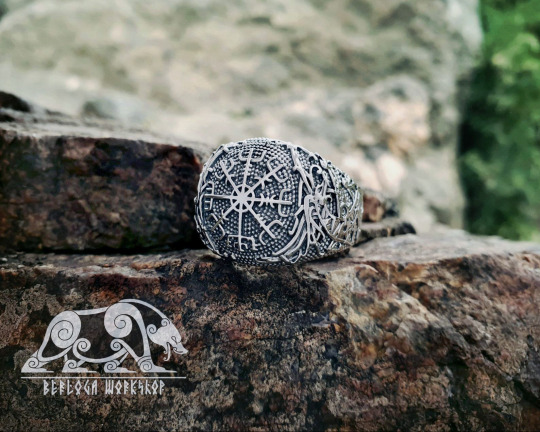

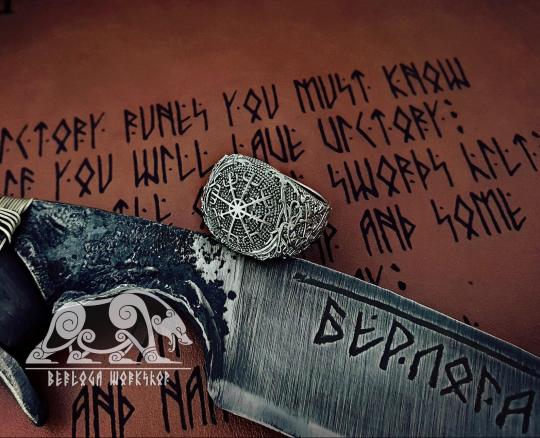
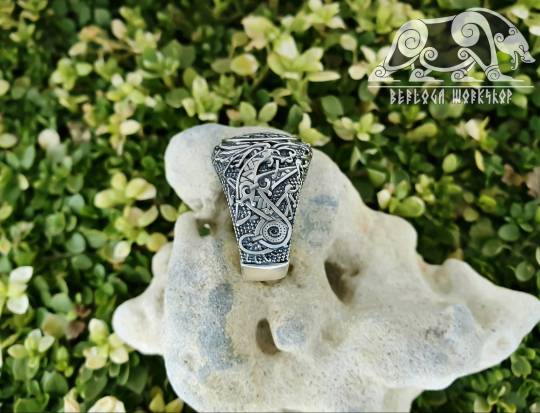
Vegvisir ring (Ringerike style)
Vegvisir - runic compass (not to get lost during navigation). Whoever wears this sign, never get lost or during a storm, or in bad weather, even if the path is unknown.
Anyone who wears this sign will never get lost in the storm or in bad weather, even if the path is unknown. In addition, it will help the sign not to lose in life.
#berloga_workshop#vikingjewelry#vikingring#norse#ring#vegvisir#handmade#silver#jewelry#sterlingsilver#sterlingsilverjewelry#runiccompass#compass#runic#norsering#vikings#viking#norsemythology#vegvisirring#Ringerike
0 notes
Text
Irish Coin Daily: Hiberno-Norse, Phase V, Ringerike design - Cross Pattée at centre (Long Cross Imitation reverse - hand, pellet, large annulet & pellet in angles)
Irish Coin Daily: Hiberno-Norse, Phase V, Ringerike design – Cross Pattée at centre (Long Cross Imitation reverse – hand, pellet, large annulet & pellet in angles)
Date: c. 1075-1080
Hiberno-Norse, Phase V, Class ? (Ringerike obverse & Long Cross imitation, with hand, pellet, large annulet, pellet in the angles) Silver Penny.
Description:
An Hiberno-Norse / Hiberno-Scandinavian, Phase V (Ringerike) Silver Penny imitating a Long Cross reverse design, with so-called “Ringerike” obverse motifs, incl. cross pattée at centre of saltire of four croziers, reversed…
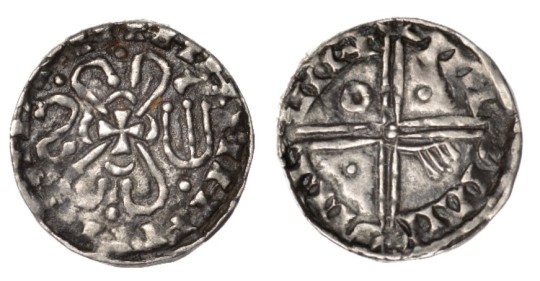
View On WordPress
#hiberno-scandinavian#long cross imitation#penny#rare#ringerike#ringerike design#silver#silver penny#viking dublin#viking penny#vikings#Dublin#hiberno-norse
0 notes
Text
Okay, this is cool. Possibly the oldest runic inscription has been found in Norway.
79 notes
·
View notes